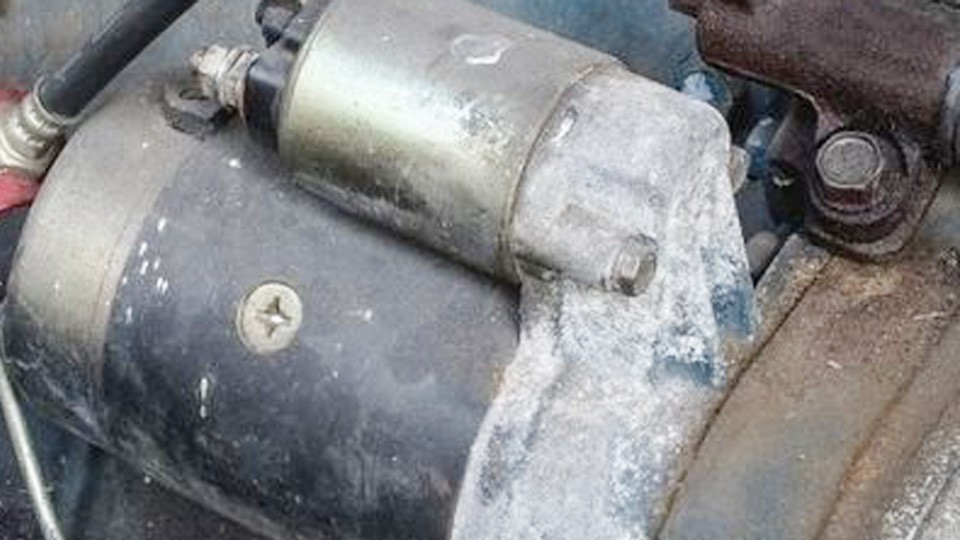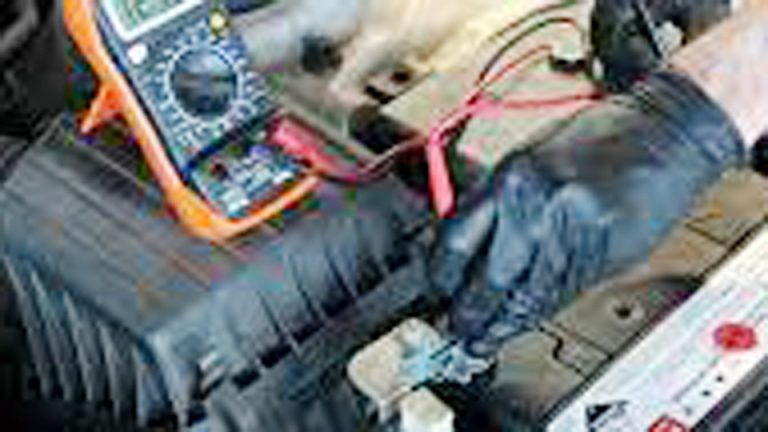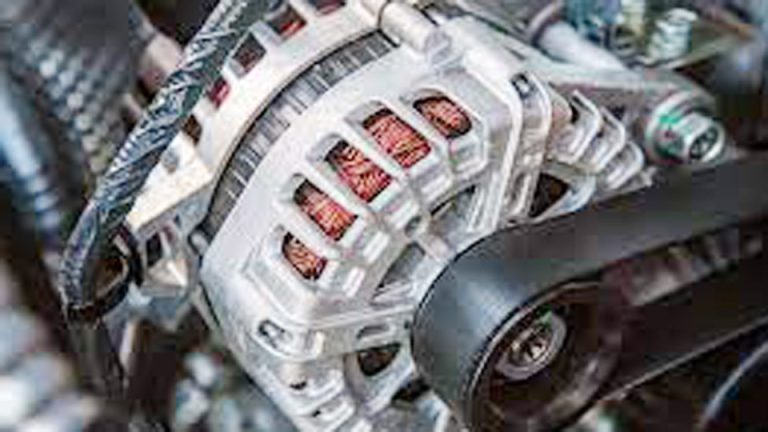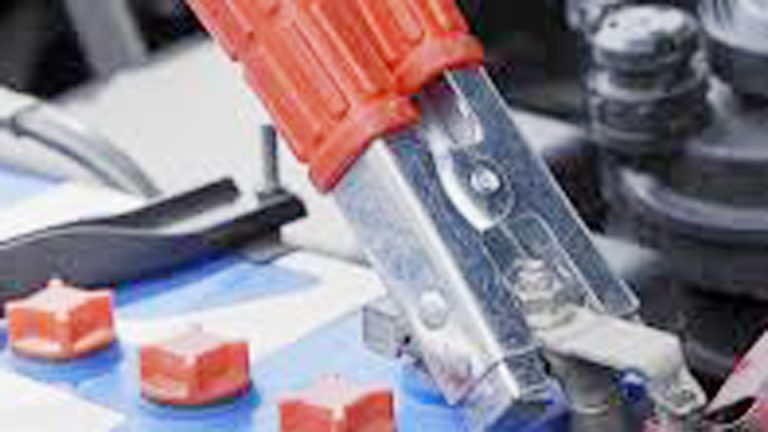I’ve lost count of how many times someone has called me saying, “My car won’t start, I think the starter’s dead—what do I do now?” It’s one of those gut-sinking moments: you turn the key (or push the button), and instead of that familiar crank, you get nothing but a click—or total silence.
So, how to start a car if the starter motor is not working? Well, first things first: the starter motor’s job is to crank the engine so it can fire up. If it fails, your car can’t start in the normal way. But depending on the situation, there are a few workarounds. For manual transmission cars, you might be able to “push-start” or “bump-start” it by rolling the car and engaging the clutch. For automatics, the options are more limited—you’ll usually need to check connections, tap the starter to free a stuck solenoid, or jump power directly to the starter to see if it engages.
I’ve had drivers tow cars into my shop thinking the engine was blown, when all it took was a temporary trick to get the car running long enough to drive in for repairs. But let me be clear: these methods are quick fixes, not permanent solutions. If the starter is really gone, replacement is the only way forward.

Image by avbumpertobumper
What Is a Starter Motor and Why Does It Matter?
Role of the Starter Motor
The starter motor is a small but mighty electric motor that kicks your engine into gear. When you turn the key (or push the start button), it engages the flywheel, cranking the engine to start the combustion process. Without a functioning starter, your car is just a 3,000-pound paperweight. I’ve seen everything from compact Hondas to beefy F-150s sidelined by a faulty starter, and it’s always a reminder of how essential this part is.
Why It’s Critical for Safety and Reliability
A failing starter motor doesn’t just strand you—it can also point to electrical issues like a weak battery or corroded wiring, which can affect other systems like lights or brakes. A reliable starter ensures your car starts consistently, whether you’re heading to work or escaping a storm. Plus, replacing it before it completely dies can save you from being stuck in a sketchy parking lot at midnight (been there, not fun).
Cost and Performance Impact
Starters aren’t cheap—expect to pay $100–$400 for a new one, plus labor if you’re not DIYing. A bad starter can also strain your battery, alternator, and even fuel efficiency if it’s causing partial cranks. Catching issues early can save you from a domino effect of repairs.
Common Signs Your Starter Motor Is Failing
Clicking or Grinding Noises
When you turn the key and hear a single loud click or a rapid “click-click-click,” it’s often the starter solenoid struggling to engage. Grinding noises? That’s usually the starter gear not meshing properly with the flywheel. I once worked on a Chevy Malibu where the owner ignored the grinding for weeks—ended up needing a new flywheel, which doubled the repair cost.
No Response When Turning the Key
If your dashboard lights up but the engine doesn’t crank, the starter motor or its wiring could be the culprit. Rule out the battery first (more on that later), but a silent starter is a red flag. I’ve seen this a lot in older Toyotas where corrosion creeps into the starter connections.
Intermittent Starting Issues
Sometimes your car starts fine, other times it’s dead. This inconsistency often points to a dying starter motor or a faulty solenoid. A customer once brought me a Dodge Ram that only failed to start on rainy days—turned out to be water seeping into the starter wiring.
Dashboard Warning Lights
Modern cars might throw a check engine light or battery warning if the starter is drawing too much power. Don’t ignore these—grab an OBD-II scanner to check for codes. I keep a cheap one in my toolbox for quick diagnostics.
When and Why You Need to Replace a Starter Motor
When to Replace
Replace the starter if it’s consistently failing to crank, making odd noises, or if diagnostic tests (like voltage checks) confirm it’s dead. If you’re jump-starting your car and it still won’t turn over, the starter’s likely toast. I’ve seen starters last 100,000–200,000 miles, but heat, corrosion, or cheap parts can shorten their life.
Why Replacement Is Necessary
A failed starter doesn’t just inconvenience you—it can leave you stranded in unsafe situations. Plus, ignoring it risks damaging the flywheel or draining your battery, leading to pricier repairs. Proactive replacement keeps your car reliable and saves you from emergency tows.
OEM vs Aftermarket Starter Motors: Which Is Better?
OEM Starters
Original Equipment Manufacturer (OEM) starters come from the same brands that supply your car’s factory parts (think Bosch, Denso, or ACDelco). They’re designed for your specific vehicle, ensuring perfect fit and performance. For example, a Denso starter for a Toyota Corolla will match the factory specs down to the bolt pattern.
Pros:
- Guaranteed compatibility
- High reliability and durability
- Often come with a warranty (1–2 years)
Cons:
- Expensive ($200–$400 for most models)
- Limited availability for older vehicles
Aftermarket Starters
Aftermarket starters, like those from Remy, TYC, or WAI, are third-party options. They’re often cheaper and widely available at places like AutoZone or O’Reilly. I’ve used aftermarket starters on budget builds, and while some perform well, quality varies.
Pros:
- Affordable ($100–$250)
- Easy to find for most vehicles
- Decent warranties (sometimes lifetime)
Cons:
- Inconsistent quality
- May not fit perfectly
- Shorter lifespan in some cases
OEM vs Aftermarket Starters
| Feature | OEM Starter | Aftermarket Starter |
|---|---|---|
| Price | $200–$400 | $100–$250 |
| Compatibility | Perfect fit | May require adjustments |
| Durability | 100,000–200,000 miles | 50,000–150,000 miles |
| Warranty | 1–2 years | 1 year to lifetime |
| Availability | Dealerships, specialty stores | Auto parts stores, online |
| Brands | Bosch, Denso, ACDelco | Remy, TYC, WAI |
My Take
For daily drivers or high-value cars, I lean toward OEM starters for peace of mind. If you’re working on a beater or a project car, a quality aftermarket starter from a reputable brand like Remy can save you cash without sacrificing too much reliability. Always check reviews and avoid no-name brands on Amazon—those are often junk.
How to Start a Car with a Bad Starter Motor
Step 1: Diagnose the Problem
Before you assume the starter’s dead, rule out other culprits:
Check the Battery: Use a multimeter to test voltage (should be 12.6V when off, 13.7–14.7V when running). A weak battery mimics starter failure. I once spent an hour troubleshooting a “bad starter” on a Ford Focus, only to find a dead battery.
Inspect Connections: Look for corrosion or loose cables at the battery and starter. Clean terminals with a wire brush and tighten bolts.
Test the Solenoid: Tap the starter lightly with a hammer while someone turns the key (more on this below). If it cranks, the solenoid might be sticking.
Step 2: Try a Manual Push-Start (Manual Transmissions Only)
If you’ve got a stick shift, you can push-start your car:
- Park on a slight incline or get a friend to help push.
- Turn the ignition to “on” (not “start”).
- Press the clutch, shift into first or second gear.
- Release the clutch as the car gains momentum (about 5–10 mph).
- The engine should turn over. If not, the issue might be beyond the starter.
I’ve push-started my old ’95 Civic more times than I’d like to admit. It’s a lifesaver, but it won’t work for automatics.
Step 3: Tap the Starter
Sometimes, the starter solenoid gets stuck. Grab a hammer or wrench, locate the starter (usually near the bottom of the engine, connected to the transmission), and give it a few gentle taps while someone turns the key. Don’t go Hulk-mode—you’re just trying to free up the solenoid. This trick worked on a customer’s Jeep Wrangler when we were in a pinch.
Step 4: Jump-Start the Car
If the battery is weak, a jump-start might give the starter enough juice to crank. Connect jumper cables properly (positive to positive, negative to a grounded metal surface). If it still doesn’t start, the starter’s likely the issue.
Step 5: Call for Help
If none of these work, it’s time for a tow or a mobile mechanic. Don’t keep cranking—a dead starter can fry your wiring or battery.
Replacing a Starter Motor: Step-by-Step Guide
Tools You’ll Need
- Socket wrench set (10mm–14mm, depending on vehicle)
- Screwdrivers (flathead and Phillips)
- Multimeter
- Jack and jack stands
- Torque wrench
- Wire brush
- Gloves and safety glasses
Safety First
Always disconnect the battery’s negative terminal before working on the starter to avoid shocks or short circuits. I learned this the hard way when a stray spark fried a fuse on a Mustang I was fixing.
Step-by-Step Replacement
- Locate the Starter: It’s usually bolted to the transmission bell housing. Check your vehicle’s service manual for specifics. On a Chevy Silverado, it’s on the passenger side, but on a Honda Accord, it’s often driver-side.
- Disconnect the Battery: Remove the negative cable to avoid electrical mishaps.
- Remove Wiring: Unplug the starter solenoid and power cables. Label them to avoid confusion later.
- Unbolt the Starter: Use a socket wrench to remove the 2–3 bolts holding the starter. They’re often tight, so a breaker bar helps.
- Remove the Old Starter: Wiggle it out carefully—it’s heavier than it looks (10–20 lbs).
- Install the New Starter: Position it, tighten bolts to the manufacturer’s torque specs (usually 25–35 ft-lbs), and reconnect wiring.
- Reconnect the Battery: Double-check all connections before reattaching the negative terminal.
- Test the Car: Turn the key. If it cranks smoothly, you’re golden.
Common Mistakes to Avoid
- Forgetting to Disconnect the Battery: This can cause shocks or damage electronics.
- Using the Wrong Starter: Double-check part numbers for your vehicle’s make, model, and year.
- Over-tightening Bolts: This can strip threads or crack the housing.
- Ignoring Corrosion: Clean all connections to prevent future failures.
My Anecdote
I once helped a buddy replace the starter on his ’08 F-150 in a freezing garage. We skipped the torque wrench, thinking we could “feel” the right tightness. Big mistake—one bolt stripped, and we spent an extra hour drilling it out. Always follow torque specs!
How to Spot Genuine vs. Fake Starter Motors
Why It Matters
Fake or low-quality starters flood the market, especially online. A counterfeit part might fail in weeks or damage your car. I’ve seen knockoff starters burn out solenoids because they couldn’t handle the amperage.
Tips to Identify Genuine Parts
- Check Packaging: OEM parts come in branded boxes (e.g., ACDelco, Denso) with holograms or serial numbers. Aftermarket brands like Remy also use quality packaging.
- Verify Part Numbers: Cross-reference the part number with your vehicle’s manual or a trusted retailer like RockAuto.
- Inspect Build Quality: Genuine starters have clean welds, precise machining, and no cheap plastic parts.
- Buy from Reputable Sources: Stick to AutoZone, Advance Auto, or dealerships. Avoid sketchy eBay sellers or generic Amazon listings.
- Look for Certifications: Genuine parts often have UL or ISO certifications stamped on them.
Red Flags
- Prices too good to be true (e.g., $50 for a “Bosch” starter)
- No warranty or return policy
- Misspelled labels or blurry logos
- Lightweight or flimsy construction
Maintenance Tips to Extend Starter Motor Life
- Keep Connections Clean: Check battery and starter terminals yearly for corrosion. Use a wire brush and dielectric grease.
- Avoid Short Trips: Constantly starting and stopping your car wears out the starter. Combine errands when possible.
- Monitor Battery Health: A weak battery forces the starter to work harder. Test voltage annually.
- Listen for Warning Signs: Address clicking or grinding noises immediately to avoid bigger issues.
US Market Insights: Brands and Availability
In the US, you’ve got plenty of options for starter motors. Dealerships stock OEM parts for brands like Ford, GM, and Toyota, but they’re pricey. Auto parts chains like AutoZone, O’Reilly, and Advance Auto carry both OEM and aftermarket options. Online retailers like RockAuto offer competitive prices but double-check shipping times.
Popular vehicles like the Ford F-150, Honda Civic, and Chevy Silverado have abundant part availability, but older or niche models (like a ’90s Mazda Miata) might require specialty suppliers.
Conclusion
A failing starter motor is a headache, but with the right knowledge, you can diagnose, start your car, or replace the part like a pro. Whether you’re tapping the solenoid to get home or swapping out the starter in your garage, understanding the signs of failure and your options (OEM vs. aftermarket) can save you time and money. Always prioritize quality parts, follow torque specs, and keep safety first. keep a multimeter and basic tools in your trunk—you never know when you’ll need to troubleshoot on the fly.
FAQ
Why Does My Car Click but Not Start?
A clicking noise usually means the starter solenoid is engaging but not getting enough power to crank the engine. Check your battery voltage, clean terminals, and inspect starter connections. If the issue persists, the starter motor or solenoid might need replacement.
Can I Drive with a Bad Starter Motor?
No, a failing starter can leave you stranded at any moment. If it’s intermittently working, get it replaced ASAP to avoid being stuck in an unsafe spot.
How Long Does a Starter Motor Last?
Most starters last 100,000–200,000 miles, but heat, corrosion, or poor-quality parts can shorten their lifespan. Regular maintenance helps.
Is It Worth Rebuilding a Starter Motor?
Rebuilding can save money ($50–$100 vs. $200+ for a new one), but it’s labor-intensive and requires expertise. For most DIYers, a new or remanufactured starter is easier and more reliable.
How Do I Know If It’s the Starter or the Battery?
Test the battery with a multimeter (12.6V off, 13.7–14.7V running). If the battery’s good but the car won’t crank, it’s likely the starter. Check connections and try tapping the starter to confirm.



